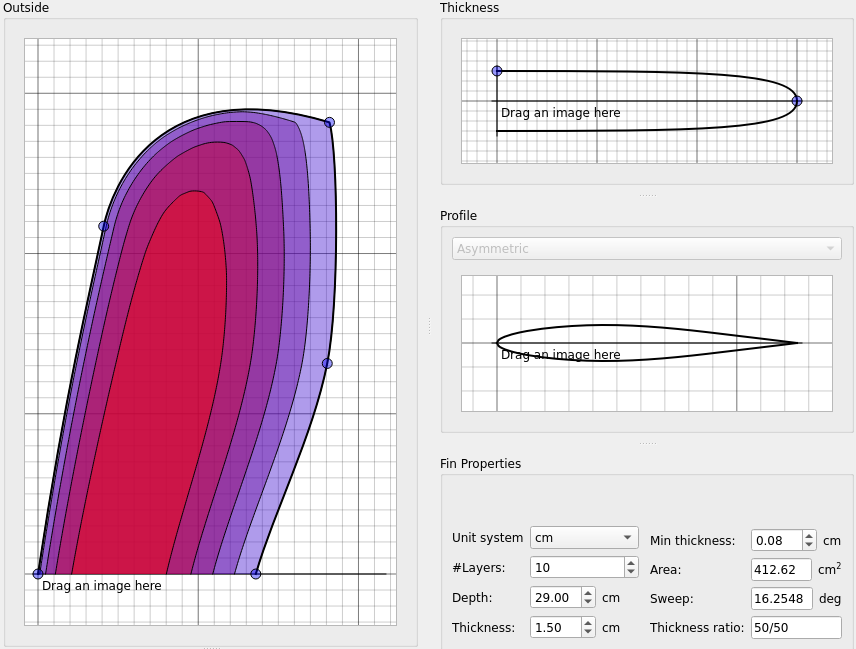This is the full story of a shallow water windsurf fin design, build and surf journey.
Problem statement
My father recently bought a new low-wind slalom board to use at a shallow water spot. These boards come with rather large fins ranging from 40 to 70 cm depth. Wanting to surf it at a spot where you regularly hit the bottom with 30 cm fins, this obviously posed a problem.
Many surfers over there use weed fins (see pic), but these make the board really stiff and require the fin to operate at large angles of attack, giving them a very unnatural feel. Let’s build a better shallow water fin.

The design
The stock fin coming with the board is 44cm deep. Tracing it in finfoil allows to calculate the surface area to use as a guideline to design a shorter alternative.
Since shorter fins are less efficient, because of higher tip losses, a compensation has to be made by an increase in surface area.
The increase in surface area is located as closer to the fin-tip to make sure the center of pressure is not moved to much up compared to the original fin. A wide board with a too short fin has the tendency to sink the rail you’re standing on, which should be avoided.
Next to the surface area increase, the thickness needs to be increased because of the increased chord length.



The original fin has a very sharp leading edge (not accurate in the finfoil screenshot above, see image below), which according to my hydrodynamic understanding serves no purpose other than cutting jellyfish. In order to avoid hard spin-outs (leading edge separation), care should be taken to create a nicely rounded leading edge.

The build
I didn’t take much build pictures, as I’m still figuring out the best build procedure.
The layup is a multiplex core covered with 1 layer 200g/m2 carbon fibre at 45deg and 1 layer 160g/m2 glass at 0deg mainly meant as abrasive protection. The leading edge is also reinforced with glass rope.




The ride
As the board is quite new, the original fin hasn’t been tested much before. The original fin had a bit of trouble going upwind and when loaded heavily the fin could easily be pushed into a hard spin-out. Meaning that the original fin is actually too small for the board. (the original fin was tested at the same times and place, but care had to be taken to avoid the shallow spots)
Riding the new short fin was an interesting experience. The ride was quite similar to the original fin (speed and control), and had the same trouble going upwind, however when pushed to spin-out the spin-out was much softer, meaning less speed was lost while recovering from it.
The shorter fin as expected had a little less lift on the rail due to the smaller leverage. But this proved not to be problematic to keep the board flat.
The main conclusion of the ride is that the design was a success in mimicing the performance of the original fin with an improvement in spin-out behavior and a drastical depth reduction.
Unfortunately the original fin (and therefore this prototype) was under-sized for the board and therefore we chose another fin as the ideal fin for the board. The Drake Shallow 41cm proved to be a great fin for this board, unleaching it’s full power.
However, only shaving off 3cm in fin depth. Up to the next prototype!
